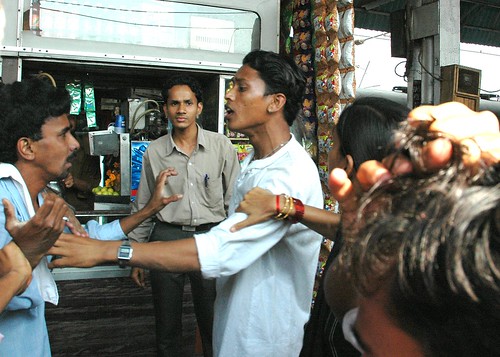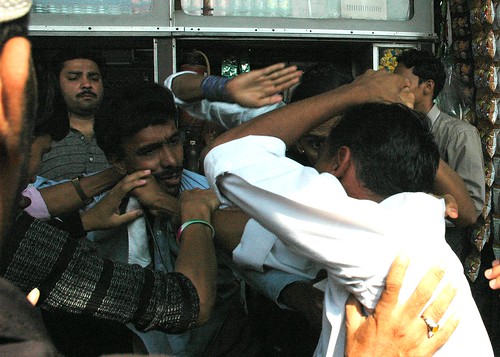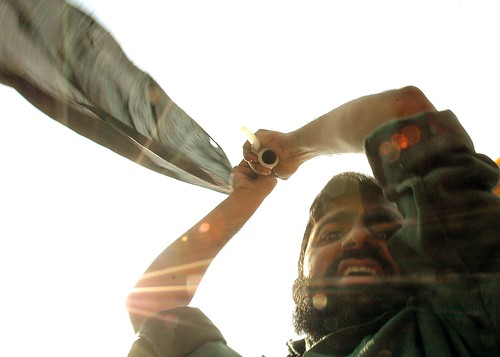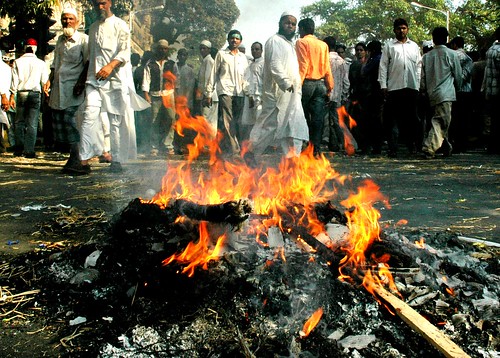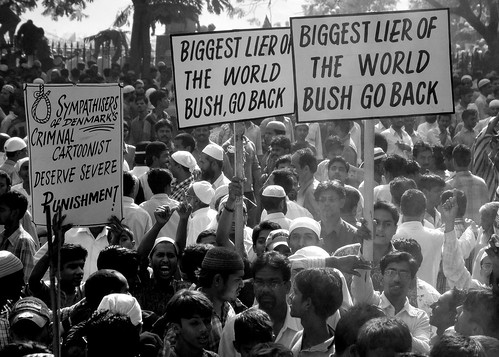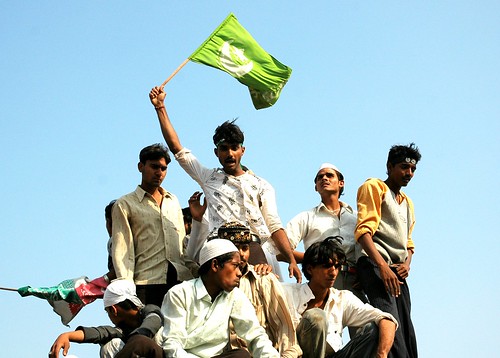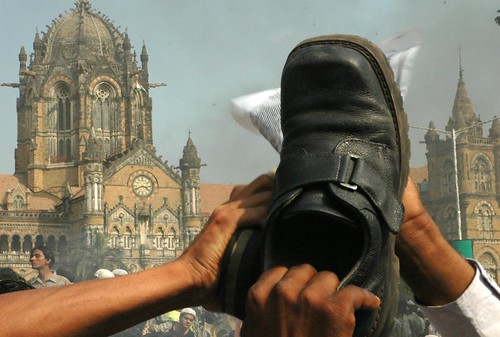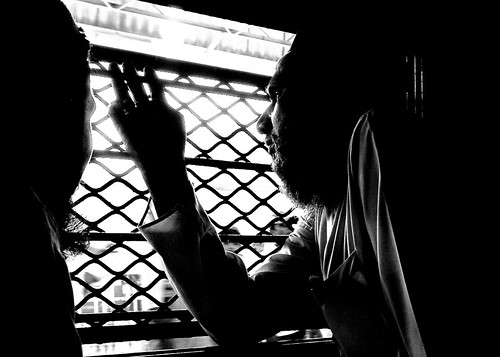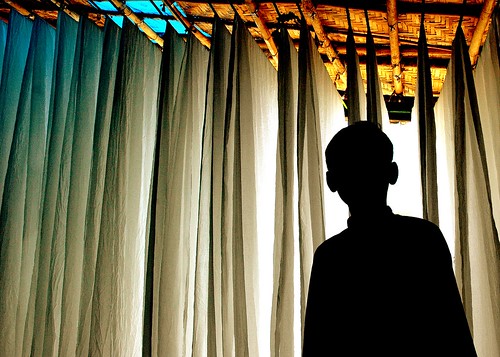
Ramshackle corrugated tin, plywood, plastic, pukkah bricks, sheets of asbestos, sweat, toil, people and garbage make Dharavi, just like piles of earth, sand, clay and other materials make ant hills. Dharavi and many other slums like it are nothing but human ant colonies built by legions of our urban poor. They are places which are at same time sombre, moving, joyful and interesting .Push and pull factors, bring people from our villages here everyday in search for something better. They settle here much to the neglect of our apathetic eyes. But under the squalor is great spirit and ingenuity. I went looking for this spirit in this place most people refer to as ‘Asia’s largest slum’ but I would prefer to call the ‘Heart of Mumbai’.
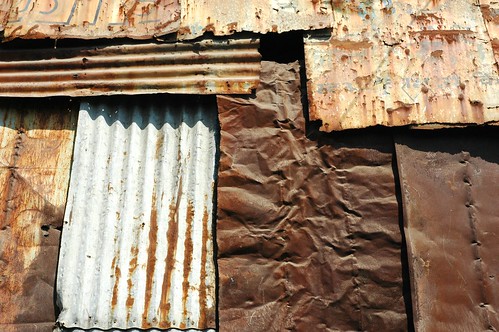
The business laws of this land are not applicable in Dharavi. How can they be applicable to a place that for all legal reasons does not exist. Dharavi is beyond our traditional India babudom of red tape, licenses, duties, municipal permissions, paperwork and taxes. Dharavi is therefore in a sense a “Free Economic Zone”. The Economist in an article suggested that “Dharavi, one of Asia's largest slums, covering 220 hectares (530 acres) near the airport, has some 100,000 people producing goods worth over $500 million a year.” Other figures suggest a figure twice that amount. The real figure is anybody’s guess but this just confirms one thing Dharavi is less a slum and more an unorganised unregulated industrial estate, a showcase of Indian entrepreneurship.
The Thirteenth Compound
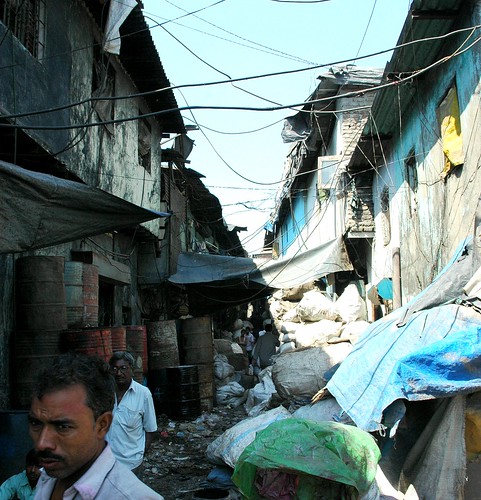
[The 13th Compound]
The sunbeams stream down through the tiny holes in the red asbestos roof of the ticket counter at Mahim Junction east. The overhead walkway lies deserted in the afternoon sun, as people prefer to use the shorter more dangerous alternative of crossing the tracks. The shoe-polishwallah, dressed in a dark navy blue uniform, looks up at me hopefully. He then focuses on my open sandals and looks away with a feeling of monetary loss.
A short walk away from the Mahim crossing lies the place in Dharavi called the 13th Compound. This is a place unlike any other probably in the world. On entering you see neatly parked Hero bicycles in a pile to your left and large industrial sized used paint cans stocked up to the sky on your right. You look up and wires criss-cross intersecting the cloudless sky. Hammer on metal is a distinct sound, a sound that reverberates in the stuffy lanes of the compound, as ragged men dressed in shirt and lungis, set the environ alight with this metallic jazz, as they bash with heavy metal rods 10 litre tin cans that were once filled with cooking oil. The “knic-nackety “ sound continues as I walk ahead, getting first louder and then softer as I pass more sheds. The polishing, beating, cleaning, melting and burning continues for the 13th Compound is where Mumbai’s scrap is given a new life and recycled. A man with a huge stack of cardboard, precariously placed on his head, whistles from behind me; it was a polite way of telling me to move out of his way. Little boys carting wheelbarrows filled with small bits of plastic run by you. The 13th Compound recycles everything: cotton scrap, metal scrap,tins, paper, glass bottles and plastic drums. This brings me to an observation I made during my trip to Byculla a few months ago.
“In a city that wastes nothing, everything has a market as long as you are willing to pay something for it. Junk is a word that does not exist. If it has a use it will be used to its maximum.”
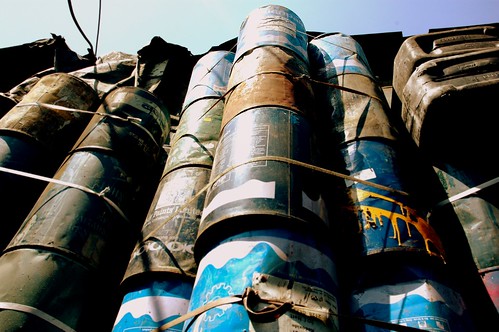
[Tin cans for recycling]
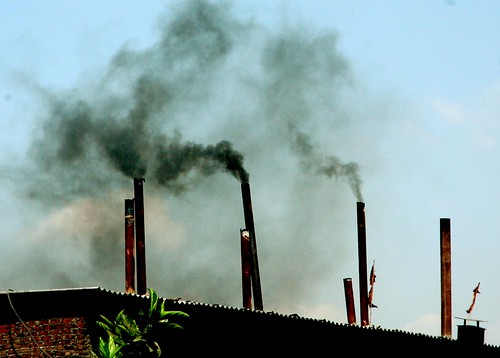
[Plastic is being recycled and remoulded. Obviously melting plastic will emmit its share of carcogenic gases.]
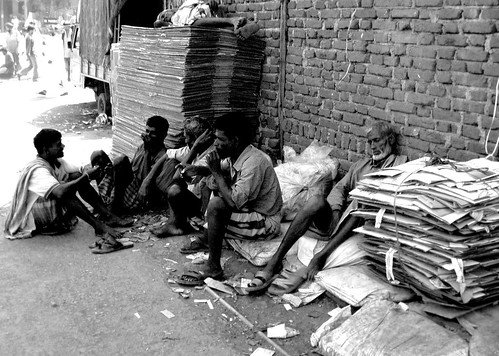
[Raadiwallah on a short bidi break. The raadiwallahs and kabadiwallahs bring all the scrap they have collected to the 13th compound and sell it by the kilo. It is strenuous work bringing kilos of scrap to Dharavi from differenct parts of Bombay.]
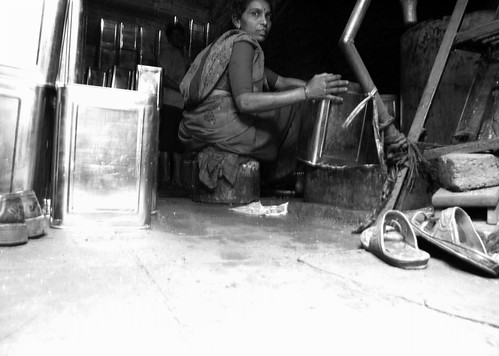
[Cooking oil tins being cleaned and recycled. I asked her how much she gets paid and she told me fifty rupees for a 12 hour day.]
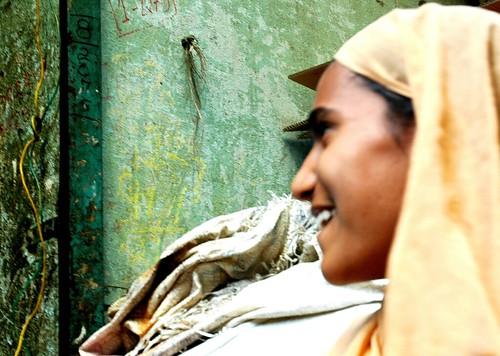
Walk across a foot bridge, over a sludge filled canal flowing into the Mithi river, and you are in another part of Dharavi. I decided to visit the section of Dharavi along the Mahim-Sion Link Road. The passages here are narrow and not more than 4 feet wide for the most part of the way and at some places a mere 2 feet.
The Soap Factory
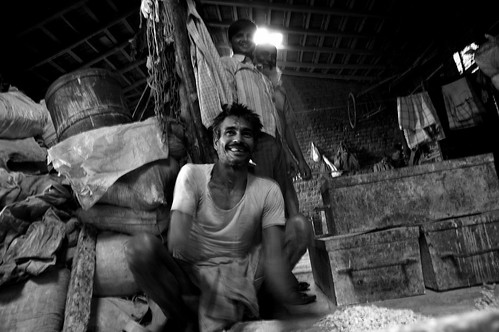
Large metal troughs lie on the floor filled with a solid bluish green brittle solid. Light skids through the tin roof onto the face of a middle-aged man perched on his haunches as he bends down with his hands coming down on what appears to be an agglomerate of used soap. He notices the stranger in his midst and smiles, his face glowing with sweat but yet he continues with his work with a degree of automation. Behind me boils an industrial sized vat of molten soap as another worker stirs the giant cauldron with a stick. What is being made here is soap; no not the face moisturising variety but the coarse “kapda-dhone walla” [detergent soap] variety. Interestingly this soap factory in Dharavi was started by former workers from the Hindustan Lever Ltd (HLL) soap factory in Sewri which closed down due to labour issues. They started making soap (very similar to the HLL Soap) to protest the lockout. It sells for about 4 rupees a bar which is less than half of what a branded soap costs, giving the soap an assured market among the poorer classes. Whenever I think of soap I am reminded of this man I met on the streets of Mahim who approached me with a strange request,“Photograph me if you wish but o n one condition. No not money but a bar of soap. Why you ask ? I want to wash my face, hands and feet so that I can pray“. I have my photograph and he has his soap.
Tie, Dye & Tailor.
Walking in one of the shopping districts of an Italian city I came across a leather boutique with the most unusual sign outside it’s door. The sign read ,“Genuine 100% Italian Leather Not Made In India.” That was just an anecdotal introduction for the 2 billion dollar Indian leather industry which employs over 2 million people. If you ask any knowledgeable shopper in Mumbai, where do you get the cheapest and best quality leather products; they are not going say the Oberoi Arcade but Dharavi. If you have ever driven down Mahim-Sion Link Road I am sure you would have noticed the gleaming leather showrooms on either side of the road, with names like Quality, Step-In, Ideal leather, etc. In their confines you can buy jackets, wallets, bags, belts and a variety of leather products. These products are mostly export rejects or surplus products, produced by the leather manufacturers of Dharavi. Though officially all the leather tanneries have supposedly been shifted to Deonar smaller tanneries still persist in Dharavi. I found one of these tanneries during my visit.
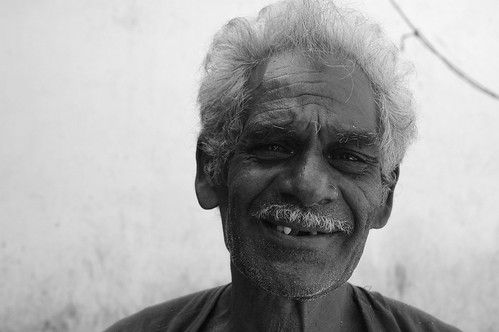
[Inamullah]
Inamullah, is a stumpy man in his late fifties, with a jovial face, crooked teeth and a receding silver hair line. He is one of the many daily wage earners, employed in Dharavi for the processing of raw hide. The ground is covered with woolly bloody hides sprinkled with a crystalline white substance which appears to be salt. Inamullah picks up one of the leather hides and tells me, “Each week we get hides from the slaughter house in Deonar. We first salt then and treat them to remove all the blood and make them smooth.” The pungent smell which disseminates from the open yard reminds me of formaldehyde at my school bio lab or the ammonia in crowded public urinals. For the first few seconds the odour grabs you by the throat and it is only a minute or so later that you can somewhat bear it. My aversion to the smell causes Inamullah to stop and he continues only when I make eye contact with him again. “We then send them to Chennai where they are processed to become leather. The processed leather is then sent back to Dharavi for finishing.”
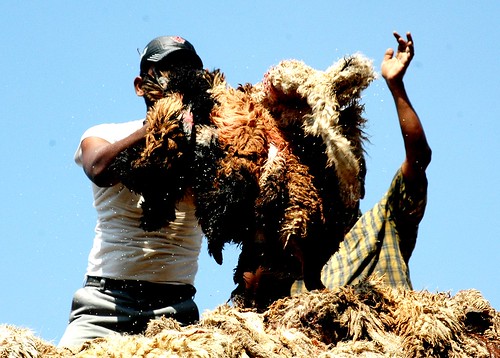
[Finished hides being loaded on to a truck to Chennai]
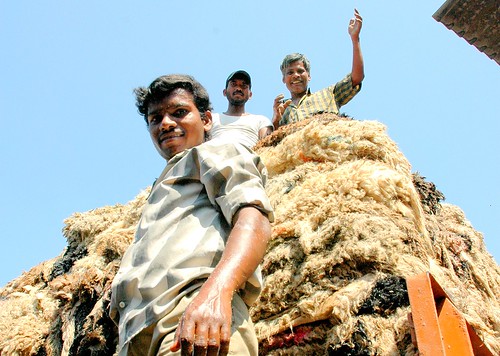
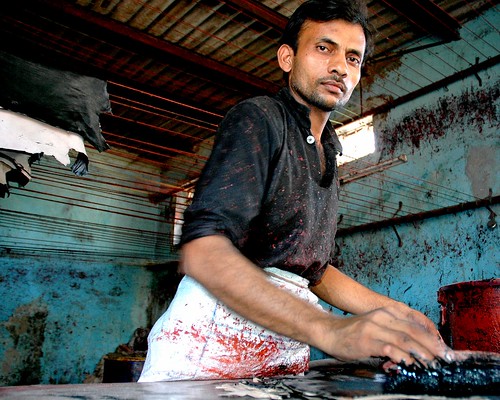
[Finished leather being dyed]
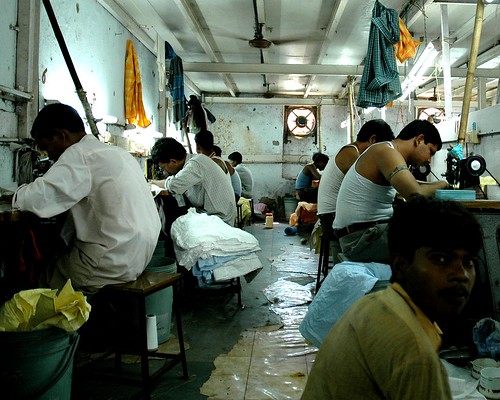
[Garment factories are also quiet common in Dharavi; they supply everyone from Walmart to your local kapda market]
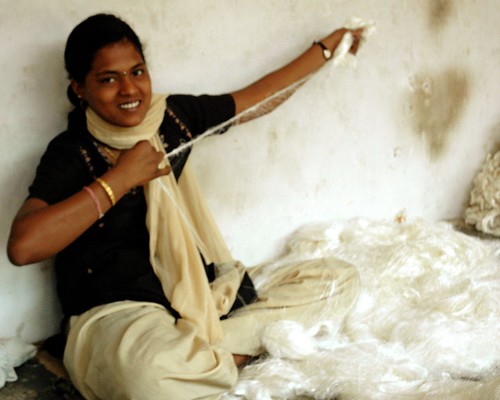
[Cottan yarn being sorted]
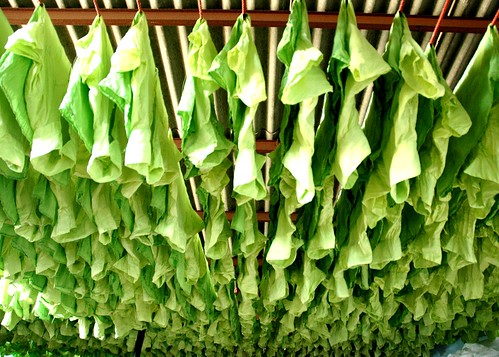
[Blouses at a makeshift garment factroy]
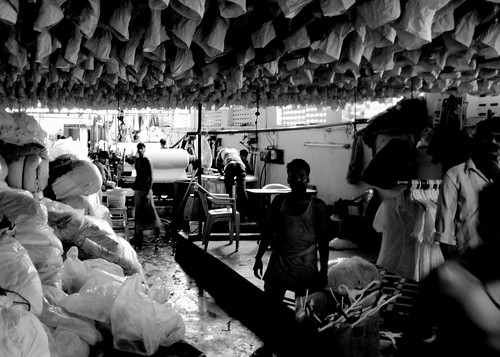
[Another view of the garment factory.]
It is hard to find an idle soul in Dharavi, it is a cesspool of activity, buzzing with energy and ingenuity, always fighting, always dreaming and looking to the future. It is then that I realised that the only idle soul in Dharavi was me.
This is the first post in a series of post on Dharavi here on my blog.
